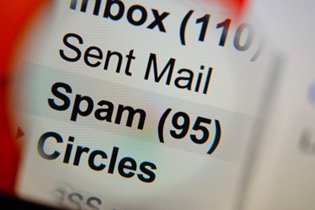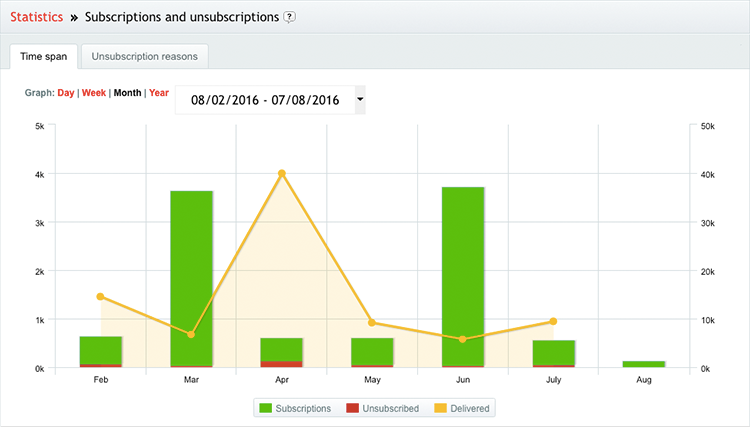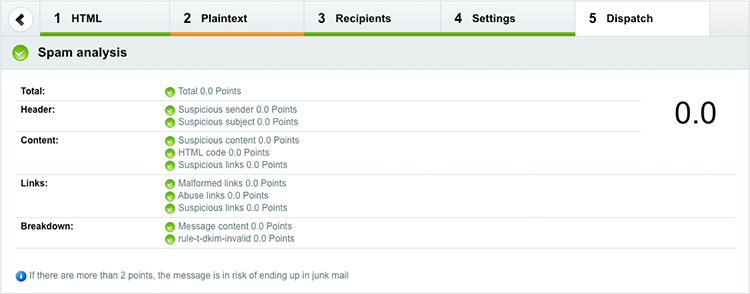



Email server providers make sure that useless spam doesn't fill our inboxes but spam filters can also filter regular newsletters.
Email marketing requires skill, but done right has distinctly the highest ROI in marketing. At the same time it is an area of marketing where the quality of the work and the tools chosen play a very important role.
One of the most essential areas of email marketing – and one of the most challenging as well – is making sure your emails don't get trapped in spam filters. The percentage of messages that go through to the recipient is never a full 100 in email marketing – and we'd hardly want it to be so, since that would result in our mailboxes being full of spam. Email server providers make sure that useless spam doesn't fill our inboxes and that our personal data is safe.
How can a marketing and communications professional make sure the messages go through, and what should be demanded from the provider of an email marketing tool? Reach the best results with these 12 tips.
Everything starts with choosing the email marketing tool provider. Every provider has their own way of doing things and some have a higher percentage of delivered messages than others. Roughly speaking the providers that have their own special deliverability team, that can examine a single customer as an individual and influence deliverability, have a stronger chance of succeeding than online tools accessible to anyone. Recent statistics about the delivery percentages of different service providers can easily be found with search engines, and they are also published regularly by eConsultancy.
One question that should be asked when choosing a service provider is: who do I call if I need help – or is help even available? Liana Technologies has a separate deliverability team of professionals that ensures that your messages go through reliably. It is the team's responsibility that the servers, content of the messages and registers all are in order.
Purchased lists are history and professional marketers gather the recipient lists themselves, with a newsletter subscription form on the website, for instance. Purchased lists can do a lot of harm, not only because they might include spam trap addresses, but also because their recipients are not interested in your messages – which lowers open and click-through rates and thus the number of delivered messages. Read 31 + 31 tips for building a good email list.
Email marketing tools use their own servers but usually messages are sent with the company's name and domains. In these cases you should "grant permission" to the servers to send in the domain settings, using DomainKeys Identified Mail and Sender Policy Framework.
Sometimes you should also consider a separate domain for sending posts if the settings can't be set correctly with the company's main domain. The key in these cases is to make sure that the new domain is registered a few weeks before sending emails for the first time so that the domains of the newsletter's subscribe and unsubscribe pages are the same as the sending domain.
A professional provider of email marketing tools can advise and help make these settings, and for the IT department it's usually a matter of minutes to get the job done. They also make sure that your settings are up-to-date if server standards change.
Always use real email addresses, and never “no-reply@" addresses, for sending, as reply-to addresses and for receiving out-of-office messages.
Modern email marketing tools provide the possibility to tweak the settings so that the mailing address doesn't receive automatic bounce messages – which is handy: few people want a thousand holiday messages in their inbox. Some servers, however, interpret this as a sign of mass messaging and potential spamming. A separate inbox should therefore be created for out-of-office messages and other automatic notifications so these messages can go straight to that inbox.
Creating high-quality content that truly interests your recipients is essential in email marketing. In addition to interesting data, good content includes excellent technical and graphical quality and mobile functionality. Therefore you should ask for frequent feedback from your recipients and alter your content according to it. Follow reports to find out which stories have been the most alluring and which the least popular, as well. By following open and click-through rates you can see if your content responds to your customers' expectations. Good rates tell server admins and other gatekeepers that you're doing things the right way.
It is essential that the content has been created according to a high technical standard. For example, sending emails as one large picture is never a good idea. Text has to be genuine, written text, and images should just be real photos that don't include any text. Also make sure that the ratio of text and images is correct: messages that rely on images too much are often interpreted as spam. Many of the tools have a spam filter analysis included that reminds you if your image/text ratio is off.
Too large attachements also make it difficult for the message to go through but a spam filter lets you know if the message is too big before sending. Many of the services also scale down the images to an optimal size if you want.
Spammers usually send large, infrequent posts. The marketer that sends posts continuously, consistently and regularly stands out from the crowd. It is crucial for building a reputation that when you start email marketing, you also keep doing it at a steady pace – in the form of a monthly letter, for example.
Keep yourself informed when your lists are being unsubscribed or when your messages are being reported as spam. The more people do that, the worse reputation you have as a sender. It is obvious that every email marketing message has to have the possibility to unsubscribe but make sure you ask for the reason. This way you stay in the loop of why you're losing readers: are your messages regarded as spam or is the content not appealing anymore.

Image: it is essential to know if your messages are wanted or not – and for what reasons.
Large, inactive recipient registers are a threat to the deliverability of your email marketing and for many email marketing providers they also cause unnecessary costs. Make sure that your tool automatically deletes incorrect emails from the lists after a certain period of time or number of approaches.
Make a habit of doing a cleaning campaign when you ask subscribers to express their willingness to receive messages in the future as well. This can be done as an automatic drip campaign, which includes very alluring messages that everyone moderately interested can be expected to react to. The last message of a drip campaign can be expressing regret about parting ways and urging the recipient to return if interest arises again – after which the recipient is automatically removed from the lists.
If the size of your list allows, you should manually go through the automated "I don't work here anymore" messages in your inbox and delete them from the lists. Most email systems automatically delete inactive emails automatically but these inactive addresses can also turn into spam traps, which can be fatal for deliverability.
Sometimes wrong and inactive addresses end up on email lists because of typos, deliberately given false addresses and other reasons. You can prevent this by using double confirmation in joining mailing lists – this is when someone who has subcribed to a newsletter gets a message in their email where they can verify joining the list. This way you can make sure that the email address is a real one and spam trap addresses won't end up on the lists.
The analysis features of email marketing tools are an excellent way to quickly check that the basic properties causing most of the spam problems are in order: the image/text ratio is correct, the links work etc.

Image: LianaMailer analysis tool analyzes and rates the content of your message.
Spam trap is email service provider and email server blacklisters' (that monitor the reputation of the servers) way to catch spammers – but unfortunately those same traps also catch ordinary, well-meaning email marketers as well. Spam trap looks like a regular email address but it is not – never has been, or is no more. It is used solely to catch the senders of junk mail.
You might already be sending messages to spam traps without knowing it. Even one recipient of this sort, depending on what type of “trap” is in question, can have a very negative impact on your deliverability. How do spam traps end up on your list, then?
Usually in one of these ways:
Some words may cause delivery problems since spammers often use them. These can sometimes be surprising. Words like XXX and viagra get easily filtered as expected but, for example, Hong Kong's traditional “Junk Boat Season” also causes problems for those that send their customers invites to “Junk Boat trips”. Also, an abundant use of numbers and prices in text might make it difficult for a message to reach its recipient.
Sounds bad? No need to be scared. The deliverability of email marketing is the outcome of many interacting factors but a professional email marketing tool provider does their own part to improve it, offers support and advice, and keeps their users informed about the best practices for email deliverability.
LianaMailer offers you not only the leading email marketing tool but also a team of professionals that takes care of the technical side as well as user guidance, individually and on the customer level.
Contact us and ask our sales team to visit if you want to improve the chances of your email marketing deliverability or hear more about email marketing.
Tilaa kuukausittainen uutiskirjeemme joka sisältää aina uusimmat mielenkiintoiset artikkelit.
Key opinion leader surveys can be done as one-off by monitoring the current situation. In the best case, however, finding influencers is a part of everyday communications and marketing that includes social media and media monitoring, press releases and PR.
Read More